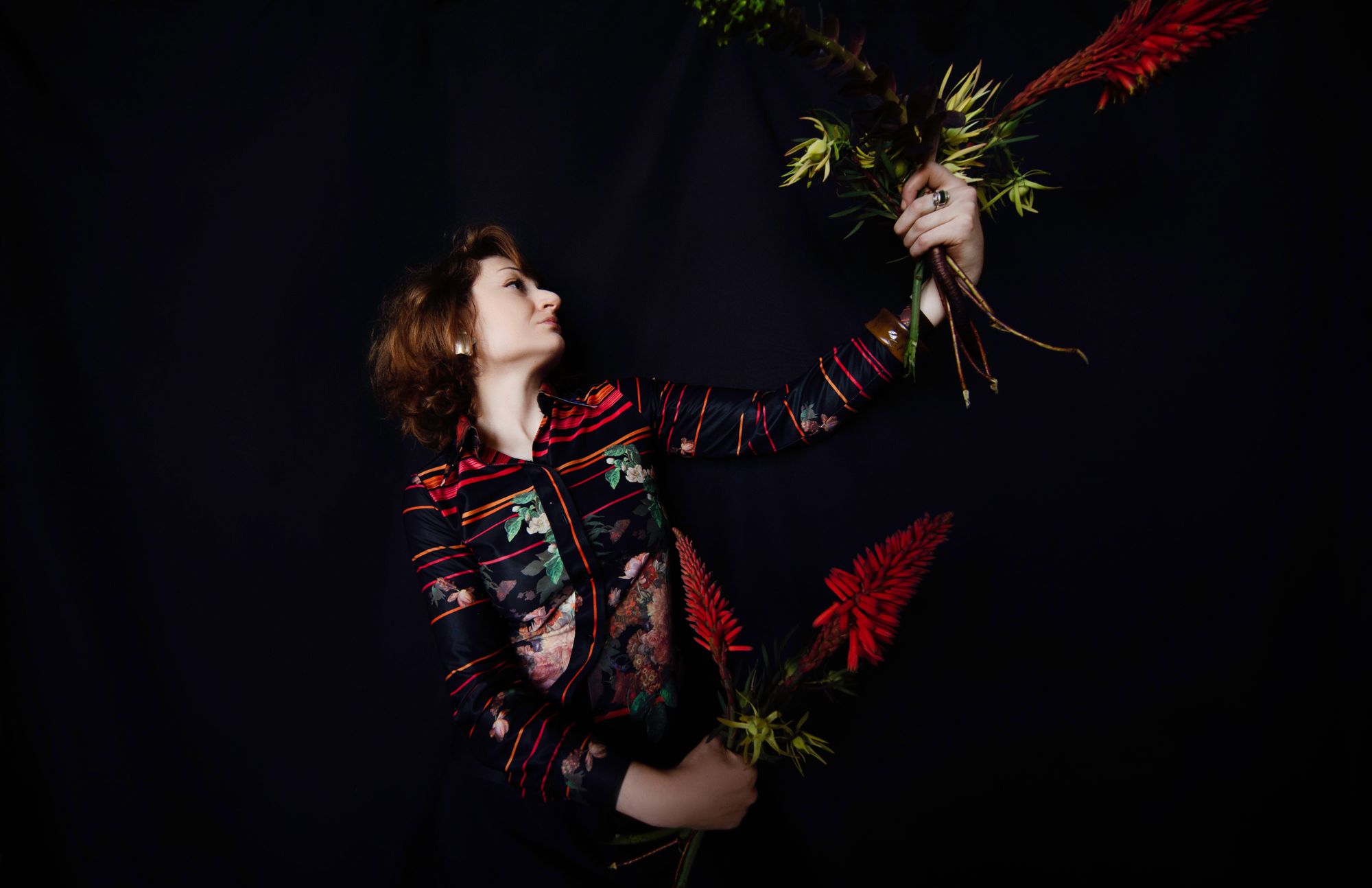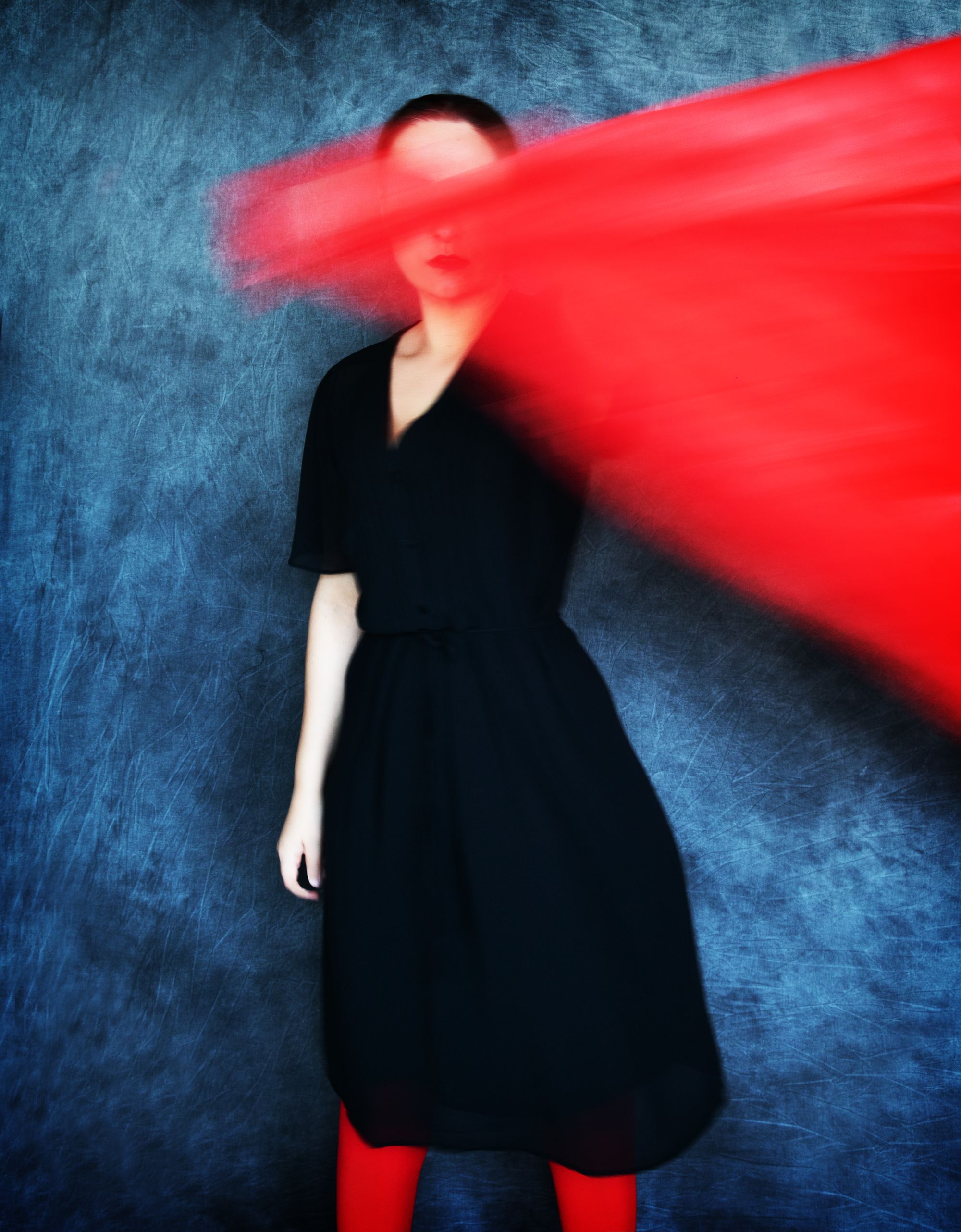
Aliona Kuznetsova was meant to be an engineer. Growing up in Kyiv, the daughter of geologists, photography was just a hobby, just something she picked up to break up the monotony of college at the Moscow Institute of Physics and Technology.
But behind the lens, Kuznetsova blazed. Within a year, she’d gone from photographing friends to developing a commercial practice capturing the faces of strangers in portraits. A few years after that, she was jetsetting around the world shooting fashion editorials for magazines like Marie Claire, Elle Swiss, and Vogue Italia.
More recently, her work has found its way into showcases and galleries like Palo Alto’s Gallery House. Kuznetsova’s first photography book, Vague Sensations, was released in 2020.
On paper, her career is a Soviet kid’s fairytale come true—but nothing is ever that easy.
Kuznetsova lives with bipolar disorder, a condition that not only once lost her the job of her dreams due to stigma, but around which she has to navigate daily. “I can’t work days and nights for two weeks, for example, because it will destabilize my mood,” she says. “I need to be much more humble about what I can do.”
Those limitations can be challenging, but they are also a source of constant inspiration. “It’s something that needs expression, not verbal expression but visual. So for me, it’s an important part of my creative universe,” she says.
Just months after moving to the Bay Area, Kuznetsova was faced with another set of limitations: the pandemic. Not long after the fashion editorials dried up, she channeled her restlessness into a new project, one that focused on the artists and makers who are more commonly found behind the scenes than in front of the camera.
“The idea is to show women who are creatives themselves, to merge their skills with their own appearance,” she explains. “They understand very deeply what they’re about. Sometimes it’s hard to explain to somebody else and it’s easier just to sort of express it.”
Now there’s a new set of limitations to contend with: the Russian invasion of her native country, Ukraine. On the day 7x7 connected with Kuznetsova for this story, she was getting on a plane for Bratislava, Slovakia to help her brother’s evacuated kids and to meet her husband's fleeing family at the border.
“We were very nervous,” she remembers, “but we just had to meet them at the border. The really hard task was to cross the country during the war with little children.” Kuznetsova’s parents have chosen to remain in Kyiv.
And just like in her work, “limitations can become sort of a catalyst,” says Kuznetsova. The Ukrainian diaspora worked together to develop a website, StopPutin.net, that is a reliable source for listing upcoming meetings and demonstrations, as well as all of the causes to which supporters can donate. Like many artists, Kuznetsova is spearheading her own fundraiser, too. The profits from a special gallery show, cards and photography sessions and consulting in April and May 2022 will be donated to Ukrainian causes.
“I feel it’s very very important right now [to support Ukraine],” says Kuznetsova. “Either we will prevail and start to rebuild or we cannot. I just think these two months are crucial for us.”
Below, Kuznetsova describes how she got some of our favorite shots from her portrait series on Bay Area women artists. See more of her work at alionakuznetsova.com and at @aliona.photography. Participate in Kuznetsova’s fundraiser at alionakuznetsova.com/standwithukraine.

(Photography by Aliona Kuznetsova)
“Anna [Monet] was the first portrait and she is a very beautiful girl by herself, so it was really interesting to me to photograph her—I would photograph her anyway. Her passion was gold and horse hair jewelry colored with natural dyes but, as Covid locked her in her flat, she started to venture out into interior design. We tried a lot of things with plastic that shows her isolation, or plants…but then the simplest picture actually was one of the most successful ones,” says Kuznetsova.

(Photography by Aliona Kuznetsova)
“Juliya’s a makeup artist so our idea was to show a complicated technique and yet not make the face very busy because we don’t want to miss her as a person in the portrait. So what she suggested is why don’t we use this one line technique, it’s hard to do, it’s interesting looking, but it’s not very busy. And I said ‘ok, let’s do this but let’s make it run not only on your face but also on your neck and shoulder and arms like it’s one thread of yarn.’ I think it’s really really masterful, especially to execute it on yourself,” explains Kuznetsova.

(Photography by Aliona Kuznetsova)
“Yana’s a painter. She is not represented and you can’t see her work other than a rare snapshot on her IG account, but the technique and the mood of her work are unparalleled. She has a lot of thoughts and ideas but she’s very dynamic. I really wanted to portray the combination of the passion that she brings but also a little bit of chaotic gestures; not planned creativity, but just sort of an intuitive and emotional creativity,” Kuznetsova explains.

(Photography by Aliona Kuznetsova)
“I knew [fashion designer and stylist] Mandalee from my fashion career—we did an editorial together before—so I reached out to her because I really like her appearance and we were talking throughout Covid so I thought maybe she needs a creative outlet as well. For other artists, it's more about the object, for her she is not even wearing her own creation, she is just styling herself. The inspiration was citrus fruit and we had many different citruses in different sizes. Here you can see again the simpler version was one of the stronger ones."

(Photography by Aliona Kuznetsova)
“This self-portrait was done on a whim because the model that was supposed to come had a Covid scare. She called me [and canceled] on the morning of the shoot and I was like ‘okay, I don’t care, I want to shoot something, so I’ll just do this portrait myself.’ Here I played with shutter speed. If you do a short exposure, you can freeze the moment and see really sharply what’s happening; if you do longer exposure you will have blurred pictures. But there is an exposure where the moving objects are already blurred but the static objects are still quite sharp so I was looking for that middle ground, to have the fabric as some abstract element jumping into the frame and then my pose would be quasi sharp. It was an idea that came in fast and worked out, whereas some of my ideas will take months and months to find the right props and location,” Kuznetsova says.